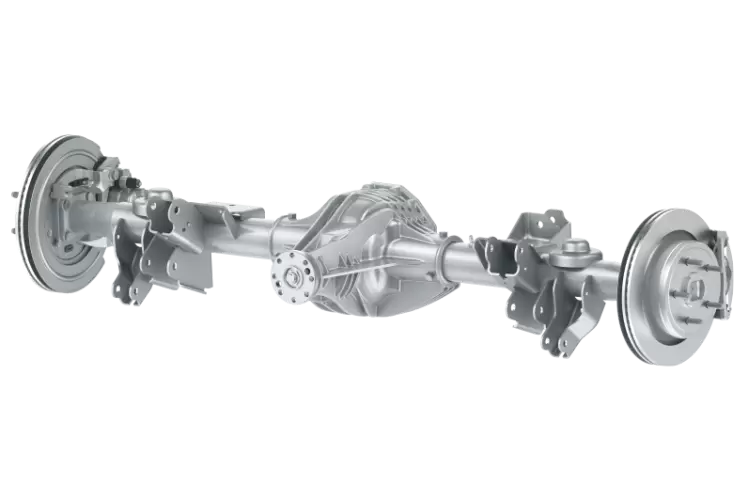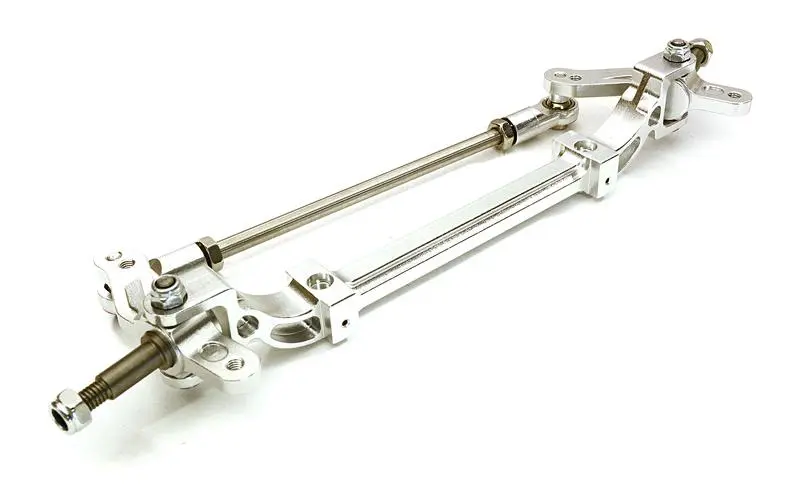Product Description
1. On CZPT semi trailer axle Since 1999
2. 20 years experience on semi trailer axle and components
3. 1 year Quality warranty
4. ISO, TS16949 Certificate
5. 7×16 hours service
6. Customized ODM OEM semi trailer axle available
7. 4 Global Offices
WONDEE Semi trailer Axle Information:
1. Axle type: American type , Germany type , CZPT type
2. Axle beam: Round beam , Suqare beam 150*150mm,127*127mm ,
3. Capacity: 11T~20T
4. Customized semi-trailer axles are available
WONDEE Semi Truck Lift Axle Detail Photos:
WONDEE 16T Axle Dimensions :
| Part No. | Max. Capacity | Distance of Chamber | Track | Axle Beam | Brake size | Length | Bearing | Weight |
| XDE12-1802 | 12000 | 420 | 1840 | 150 | 420×180 | 2156 | 33213/33118 | 372 |
| XDE12-2002 | 12000 | 354 | 1840 | 150 | 420×200 | 2156 | 33213/33118 | 396 |
| XDE14-2001 | 14000 | 354 | 1840 | 150 | 420×200 | 2188 | 33215/33119 | 416 |
| XDE16-2001 | 16000 | 356 | 1850 | 150 | 420×200 | 2242 | 32314/32222 | 468 |
| XDE16-2201 | 16000 | 376 | 1850 | 150 | 420×220 | 2242 | 32314/32222 | 474 |
| XDE18-2202 | 18000 | 376 | 1850 | 150 | 420×220 | 2242 | 32314/32222 | 491 |
WONDEE Semi trailer Axle machining:
WONDEE Heavy duty semi trailer axle Features :
1.Axle beam use 20Mn2 seamless pipe, through one-piece press forging and special heat-treatment, which has great over loading capacity and high intensity.
2. Axle spindle,which was processed by digital controlled lathe, is made of alloy material. The bearing position is processed by the method of hardending operation,therefore the bearing can be fixed by hand instead of heating, also convenient for maintain and fixing.
3. Axle spindle is connected by the by submerged arc welding, which make the whole beam more reliable and solid.
4.Axle bearing position is used the grinding machine to keep the bearing at the same level, after processing, it can assure that the concentricity within 0.02mm strictly.
5. Axle grease lubricant is supplied by EXXON Mobile which could providehigh lubricating performance and protect bearing well.
6. Axle brake lining is high performance, non-asbestos, non-pollution and long service life. To make check and replace easily, also come with the position of the exhaustion to remind customer to check and maintain.
7.Axle bearing is adopted famous brand in China, with the advantages of over loading capability, High rotating speed, good intensity, abrade resistant and heat resistant.
WONDEE Semi trailer Axle Warehouse:
WONDEE axle factory Workshop :
Besides Semi trailer Axle ,WONDEE also Supply:
| Semi-trailers: | |||
| Skeletal semi-trailers | flatbed semi-trailers | container semi-trailers | low bed semi-trailers |
| van semi-trailers | fuel tank semi-trailers | logging semi-trailers | Fence Semi trailers |
| Spare Parts: | |||
| Leaf spring, | flat bar, | Chassis, | H-beam |
| Air suspension, | mechanic suspension, | bogie | Coupling, |
| Axle | air chamber, | slack adjuster | hitch. |
| Brake drum | brake shoe | brake lining | wheel hub |
| tubeless wheel rims, | tube wheel rims, | Aluminum wheel rim | wheel bolt |
| u bolt | center bolt | hub bolt | twist lock, |
| Turntable, | 5th wheel, | landing gear, | king pin, |
/* January 22, 2571 19:08:37 */!function(){function s(e,r){var a,o={};try{e&&e.split(“,”).forEach(function(e,t){e&&(a=e.match(/(.*?):(.*)$/))&&1
| Condition: | New |
|---|---|
| Axle Number: | 1 |
| Application: | Trailer |
| Certification: | ISO |
| Material: | Steel |
| Type: | Rear Axles |

How does a solid beam axle impact the ride quality of a vehicle?
A solid beam axle can have both positive and negative impacts on the ride quality of a vehicle. The specific effects depend on various factors, including the suspension setup, road conditions, and the vehicle’s intended use. Here’s how a solid beam axle influences ride quality:
1. Simplicity and Durability:
Positively, solid beam axles are known for their simplicity and durability. The absence of complex moving parts makes them robust and less prone to mechanical failures. This can contribute to a smoother ride over time, as there are fewer components to wear out or require maintenance.
2. Load Distribution:
A solid beam axle’s design allows for even distribution of weight across both wheels on the axle. This can lead to improved stability and handling, especially when carrying heavy loads. Vehicles with solid beam axles may have reduced body roll, enhancing the perception of ride quality.
3. Off-Road Capability:
Solid beam axles are commonly used in off-road vehicles due to their ability to maintain wheel contact with uneven terrain. In off-road applications, this feature can lead to a more comfortable ride, as the suspension flexes to absorb shocks and maintain traction on challenging surfaces.
4. Stiffness and Comfort:
On the downside, solid beam axles are generally stiffer compared to independent suspension systems. This stiffness can result in a less comfortable ride on smooth or well-paved roads. The vehicle may transmit more road imperfections and vibrations to the passengers.
5. Limited Articulation:
In certain situations, a solid beam axle’s limited articulation can impact ride quality. For example, when one wheel encounters a bump or obstacle, the other wheel is affected as well. This can lead to a bumpier ride compared to independent suspension systems, where each wheel can move independently to absorb shocks.
6. Road Conditions:
Ride quality is highly dependent on road conditions. On rough, uneven, or unpaved roads, a solid beam axle may perform better by maintaining wheel contact and stability. Conversely, on smooth and well-maintained roads, the ride quality may be less comfortable due to the stiffness of the axle.
7. Vehicle Design and Tuning:
Manufacturers can influence ride quality by designing the suspension components and tuning the shock absorbers to complement the solid beam axle. While the inherent stiffness remains, adjustments can be made to mitigate the negative effects and enhance comfort.
8. Passenger Expectations:
Ultimately, perceptions of ride quality can vary among passengers. Some may prioritize stability and load-carrying capacity, accepting the trade-off of a stiffer ride. Others may prioritize a smoother, more comfortable ride and opt for vehicles with independent suspension systems.
Summary:
The impact of a solid beam axle on ride quality is influenced by various factors, including the vehicle’s design, suspension tuning, and road conditions. While solid beam axles offer durability, load distribution, and off-road capability, they may result in a stiffer and less comfortable ride on smooth roads when compared to independent suspension systems.

What is the history of beam axles in automotive engineering?
The history of beam axles in automotive engineering is rich and spans several decades. Beam axles, also known as solid axles or live axles, have played a crucial role in the development of vehicles. Here’s a brief overview of their history:
Early Automobiles:
When automobiles were first introduced in the late 19th and early 20th centuries, they primarily used beam axles due to their simplicity and reliability. These axles provided a solid platform for mounting the wheels and supporting the vehicle’s weight. Early cars often featured front and rear beam axles connected by leaf springs for a smoother ride.
1920s and 1930s:
During the 1920s and 1930s, beam axles were prevalent in the automotive industry. They were commonly found in both passenger cars and commercial vehicles. The Ford Model T, for example, used beam axles and was one of the most iconic vehicles of that era.
Evolution and Diversification:
As automotive engineering progressed, there was a diversification of suspension systems. While beam axles remained a staple in many vehicles, independent suspension systems began to gain popularity for their improved ride comfort and handling characteristics. Independent front suspension systems, which allowed each wheel to move independently, became a common feature in passenger cars, while beam axles remained popular in trucks and heavy-duty applications due to their load-bearing capacity.
Post-World War II Era:
After World War II, there was a shift toward more advanced suspension systems. Passenger cars increasingly adopted independent suspension, offering a smoother and more comfortable ride. However, beam axles continued to be used in the rear of many vehicles, especially trucks and SUVs, where load-bearing capability and durability were key considerations.
Specialized Applications:
Beam axles found new life in off-road vehicles and heavy-duty trucks, where their durability and ability to handle rough terrain made them ideal choices. In the world of off-roading and 4×4 vehicles, solid axles (a type of beam axle) were preferred for their ruggedness and articulation capabilities.
Modern Use:
Today, beam axles are still used in specific vehicle applications, primarily in the rear suspension of trucks and heavy-duty commercial vehicles. Their load-bearing capacity and durability make them well-suited for these demanding roles. Additionally, some retro-style and classic vehicles may incorporate beam axles to capture the aesthetics and character of older vehicle designs.
In summary, the history of beam axles in automotive engineering is marked by their enduring presence in various vehicle types. While independent suspension systems have gained ground in passenger cars, beam axles continue to thrive in specialized applications, ensuring their relevance in modern automotive design.

How do beam axles compare to other types of axles in terms of durability?
Beam axles, also known as solid axles or live axles, have their own set of advantages and disadvantages when it comes to durability compared to other types of axles. Let’s compare the durability of beam axles to some common axle types:
1. Beam Axles vs. Independent Suspension Axles:
Beam Axles:
- Advantages:
- – Beam axles are known for their durability and robust construction.
- – They are less complex and have fewer moving parts compared to independent suspension systems, reducing the potential points of failure.
Independent Suspension Axles:
- Advantages:
- – Independent suspension axles can offer a smoother ride and better handling on paved roads.
- – They adapt to uneven terrain more effectively due to the independent movement of each wheel, which can reduce stress on the axle components.
2. Beam Axles vs. Torsion Axles:
Beam Axles:
- Advantages:
- – Beam axles are sturdy and suitable for heavy loads, making them common in applications like trucks and trailers.
- – They provide reliable load distribution, reducing the risk of overloading a single wheel.
Torsion Axles:
- Advantages:
- – Torsion axles are known for their maintenance-free operation and resistance to corrosion, as they have fewer exposed components.
- – They provide a smooth and independent suspension system, enhancing ride comfort for trailers and smaller recreational vehicles.
3. Beam Axles vs. Half-Shafts (Constant Velocity Axles – CV Axles):
Beam Axles:
- Advantages:
- – Beam axles are highly durable and can withstand significant loads and rough terrain, making them suitable for applications like off-road vehicles and trucks.
- – Their solid construction reduces the risk of component failure.
Half-Shafts (CV Axles):
- Advantages:
- – Half-shafts, often used in front-wheel-drive vehicles, provide better maneuverability and handling on paved roads due to their ability to pivot and accommodate steering.
- – They offer a balance between durability and adaptability to various road conditions.
While beam axles excel in terms of durability and load-bearing capacity, they may sacrifice some ride comfort and handling precision, particularly on uneven roads. The choice between beam axles and other axle types depends on the specific vehicle application and the trade-offs between durability, handling, and comfort.


editor by CX 2024-05-09